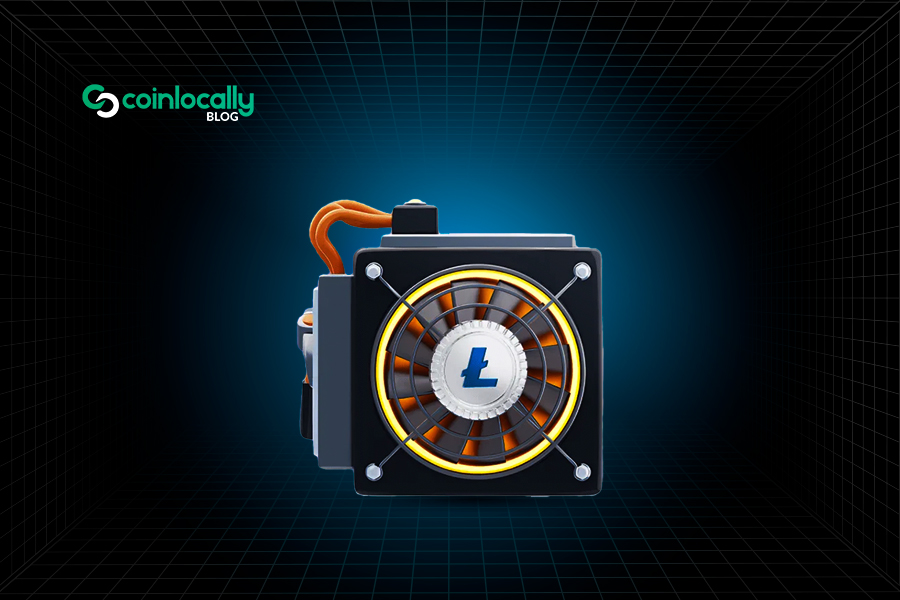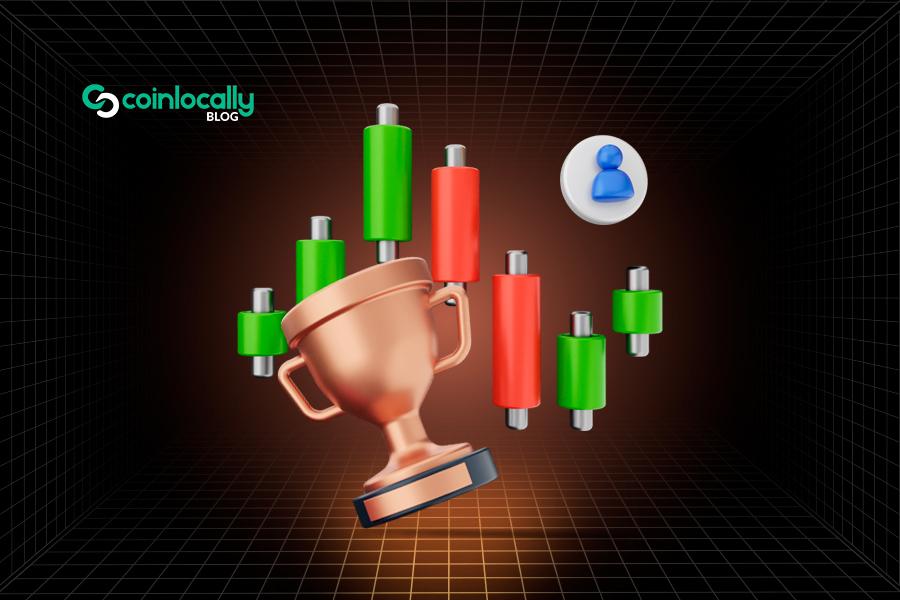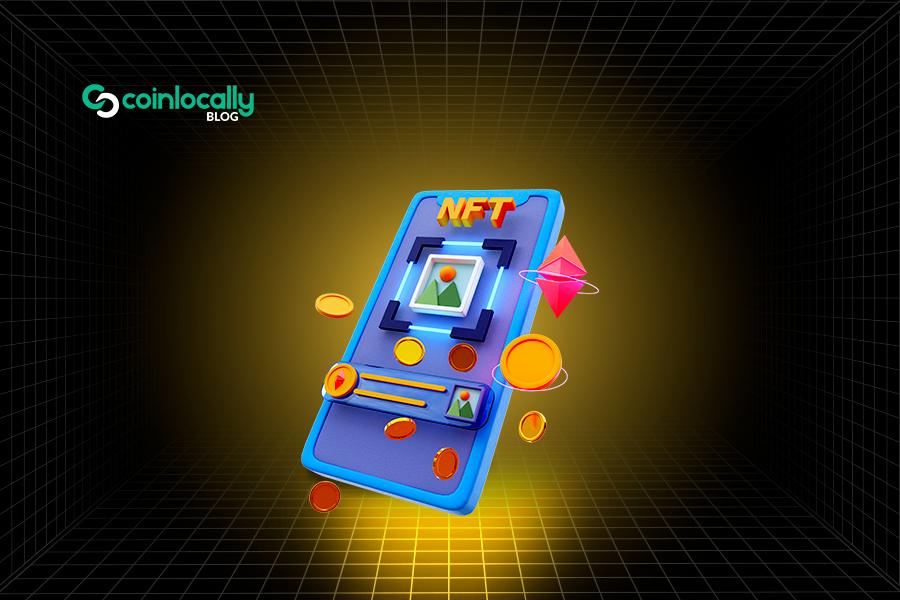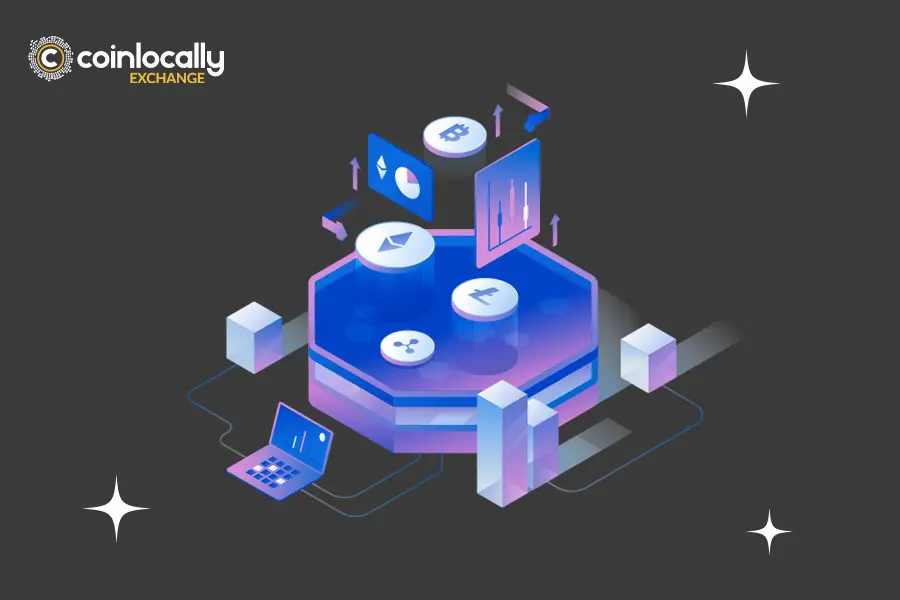Litecoin (LTC), a prominent cryptocurrency, offers individuals a captivating opportunity to participate in the digital currency revolution by becoming miners. Introduced in 2011 as a fork of Bitcoin, Litecoin aimed to improve scalability and transaction speed. It operates on its own blockchain and uses a proof-of-work consensus mechanism to validate transactions and secure the network. Mining Litecoin allows you to obtain cryptocurrency without purchasing it directly.
It presents a potentially profitable venture, provided you approach it correctly and understand factors like electricity costs, hardware performance, and the Litecoin market price. Furthermore, mining is crucial in securing the network by validating transactions and adding them to the blockchain, contributing to its decentralization and stability. Mining also provides a hands-on learning experience about blockchain technology, cryptography, and decentralized systems.
This guide explains how Litecoin mining works, the equipment you need (the Litecoin miner), how to set up your operation, optimize performance, and navigate the associated risks.
Table of Contents
The Fundamentals of Litecoin Mining
Understanding the core principles behind Litecoin mining sets you on the right path. The process involves computing power to solve complex mathematical problems, verifying transactions, and adding new blocks to the Litecoin blockchain.
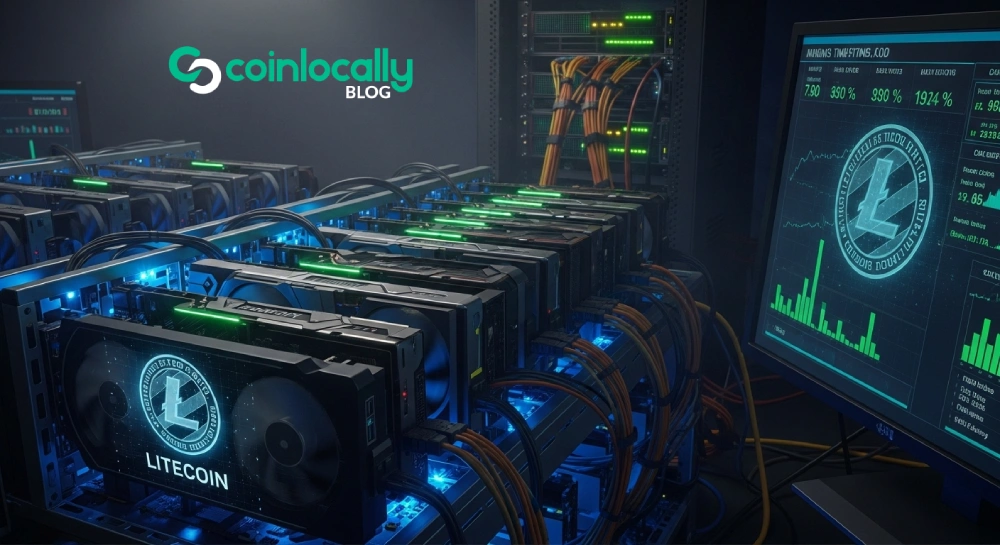
How Litecoin Mining Works
Mining serves as the mechanism for verifying and adding transactions to Litecoin’s blockchain. Miners utilize specialized hardware and software to solve complex mathematical problems, also known as hashes, creating new blocks. These blocks chronologically record the latest transactions and join the blockchain.
Finding a specific hash value that meets the criteria set by the Litecoin protocol drives the mining process. Miners compete to discover the correct hash first, and the winner receives a reward in Litecoin. This competition necessitates powerful hardware, leading to the development of specialized mining rigs, specifically Application-Specific Integrated Circuits (ASICs). ASICs perform these complex calculations much more efficiently than general-purpose computers. The increasing difficulty of finding the correct hash requires tremendous computational power. The process ensures the security and integrity of the Litecoin network.
Litecoin, like Bitcoin, uses a Proof-of-Work (PoW) system to secure its network. This means miners must perform computations to validate transactions. However, Litecoin employs a unique algorithm called Scrypt, which is different from Bitcoin’s SHA-256 algorithm. The Scrypt algorithm specifically enhances memory usage, which the sources describe as contributing to immunity against practical mining by raw processing power. This has resulted in a mining environment where many entities contribute a small share to the overall mining output.
Litecoin vs. Bitcoin Mining
While both Litecoin and Bitcoin utilize Proof-of-Work, key differences distinguish their mining processes:
- Algorithm: Bitcoin consistently uses the SHA-256 algorithm, whereas Litecoin was designed with Scrypt. The Scrypt algorithm requires hardware different from SHA-256.
- Block Time: Litecoin has an average block generation time of 2.5 minutes, significantly faster than Bitcoin’s 10 minutes. This quicker confirmation speed allows Litecoin to process transactions more rapidly. Miners receive a reward of 6.25 Litecoins per block mined.
- Supply: Litecoin features a total supply of 84 million coins, four times greater than Bitcoin’s cap of 21 million, aiming for a greater sense of availability.
- Mining Difficulty: Litecoin’s mining difficulty adjusts more frequently than Bitcoin’s, which can make joining the network simpler for new miners.
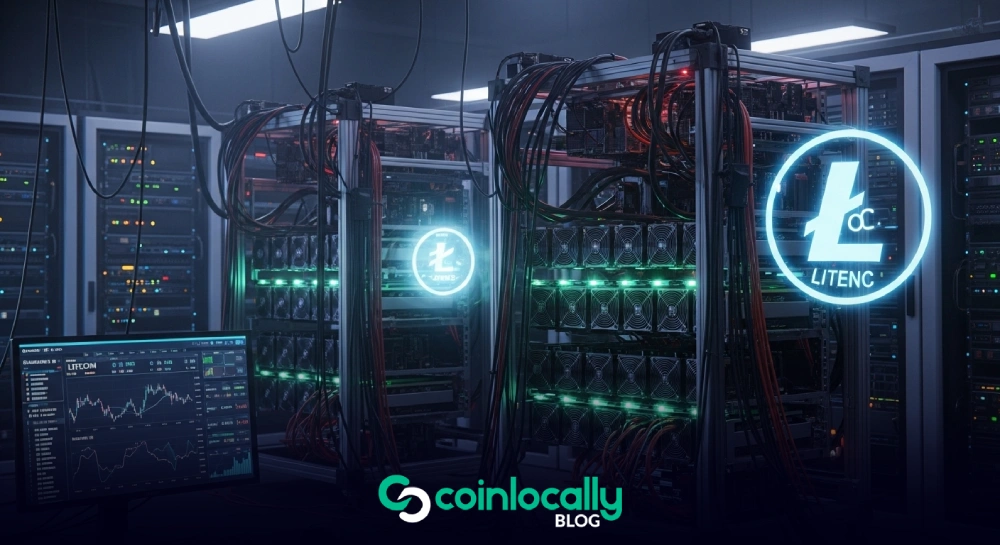
Getting Started with Litecoin Mining
Embarking on your Litecoin mining journey requires specific hardware, software, and a place to store your earnings.
Essential Hardware: The Litecoin Miner
Efficiently mining Litecoin demands specialized hardware. You primarily use ASIC miners, though powerful GPUs can also perform the task. ASICs, specifically built for mining, offer significantly faster speeds and greater efficiency than GPUs for the Scrypt algorithm. While GPUs are more affordable and versatile, they provide slower speeds and lower profitability compared to ASICs.
When selecting your mining hardware, you consider several crucial factors:
- Hash Rate: The hash rate indicates the speed at which your mining hardware can solve hashes. A higher hash rate increases your chances of earning rewards.
- Power Consumption: Mining consumes substantial electricity, and high power consumption impacts your profitability. You opt for energy-efficient hardware to minimize electricity costs.
- Cost and Affordability: You weigh the upfront cost of the hardware against its potential return on investment, aiming for a balance between price and performance to ensure profitability. Good ASICs can range from $1,000 to $10,000 or more.
- Reliability and Longevity: You choose reputable hardware manufacturers known for producing reliable and durable mining equipment to minimize downtime and maintenance costs.
You also require an adequate power supply unit (PSU) capable of meeting your mining devices’ power needs, with high-wattage PSUs recommended for stability. A robust cooling system is equally essential, as mining rigs generate significant heat. Efficient cooling systems, such as liquid cooling, cooling fans, and adequate ventilation, prevent overheating and hardware failure, helping your mining hardware last longer.
Selecting Your Litecoin Miner
The sources mention specific ASIC miners frequently used for Litecoin mining. These include:
- Bitmain Antminer L7 models with various hash rates (e.g., 9.5GH, 8.55GH, 8.8GH, 9.05GH, 9.3GH).
- Bitmain Antminer L9 models (e.g., 16GH, 15GH, 17GH). The L9 is the newest model mentioned and can cost around $13,000.
- Elphapex DG1 (11GH), Elphapex DG1+ (14.4GH), and Elphapex DG1 Home (2 GH). The Elphapex DG Home-1 is suggested as a good starting home miner.
Purchase Litecoin Miners
You can purchase new Litecoin miners from retailers. For instance, the sources mention buying Litecoin miners directly from German experts who offer models like the Bitmain Antminer L9 and L7, as well as Elphapex models, with prices listed in EUR. These experts provide personal consultation, 24/7 support, warranty, and worldwide delivery. Asic Marketplace also offers Litecoin miners, parts, and repair services. For those looking for “Litecoin Miner kaufen” (buy Litecoin miner), consulting such retailers provides options.
Buying used ASIC miners presents a cost-effective alternative and allows for quicker entry into mining compared to purchasing new equipment. However, buying used equipment demands careful consideration. Expert tips for buying second-hand ASICs emphasize conducting thorough market research to assess current market values and track price trends. You check prices across online marketplaces, specialized hardware websites, and forums. Using online tools and resources like mining blogs and reseller sites assists in tracking trends.
Evaluating the seller’s credibility is critical. You check the seller’s reputation, customer reviews, business history, and any industry recognition. Understanding return policies and available warranties provides a safety net. To mitigate risks, you ideally physically inspect the miner or request recent photos and videos showing it operating. Using secure payment options and asking for proofs like purchase receipts or repair history also helps.
A detailed inspection of a used ASIC miner involves examining the physical condition for damage like dents or cracks, checking fans and cooling mechanisms, and assessing the power supply unit for wear or damage. You verify that the PSU provides adequate power. Checking firmware and software compatibility ensures the firmware is up to date and the software works with your systems.
Performance of Litecoin Miners
Performance testing is crucial for used miners. You analyze operational logs for recurring errors, warnings, or signs of instability. Running stability tests involves using software to stress test the miner, monitoring hash rate against specifications, and observing for crashes or performance drops. Checking firmware compatibility consists of verifying the version and updating it if possible. Monitoring noise and heat levels indicates the miner’s health; excessive noise suggests cooling issues, and high temperatures lead to hardware failure and reduced lifespan.
Maintenance significantly impacts a miner’s lifespan and efficiency. Regular cleaning using soft brushes, compressed air, and isopropyl alcohol removes dust and debris that can cause overheating. Reapplying thermal paste annually ensures efficient heat transfer from chips to heatsinks. Monitoring temperature through software tools and optimizing cooling solutions are vital to prevent overheating.
Deciding on repairs for a used miner requires a cost-benefit analysis. You estimate repair costs, comparing them to the cost of buying a new or more reliable used miner. If repair costs approach or exceed 50% of the replacement cost, buying new might be more economical. You assess the miner’s current condition and historical performance, evaluate potential performance improvement and extended lifespan from repairs, and consider the opportunity cost of downtime and the miner’s future competitiveness.
Understanding the potential resale value is also essential. Market demand, changes in mining difficulty, technological advancements, warranty, and historical usage (including maintenance records and operational logs) all influence a miner’s resale value.
Setting Up Your Litecoin Wallet
Before you begin mining, you need a secure place to store your Litecoin earnings. A Litecoin wallet serves this purpose. Various types of wallets exist:
- Hardware Wallets: These physical devices store your Litecoin offline, offering high security and making them very secure. Examples include Ledger Nano S, Ledger Nano X, and Trezor models. Sources consider them among the safest options for storing cryptocurrency.
- Software Wallets: These applications run on your computer or phone. Examples include Exodus, Atomic Wallet, and Electrum-LTC. They are user-friendly and connected to the internet, making them somewhat more vulnerable to hacking than hardware wallets.
- Web Wallets: These online wallets offer convenience but carry higher risks of online hacking compared to hardware wallets. Examples include LiteWallet and Guarda. You use web wallets with caution.
- Paper Wallets: These involve printing your private and public keys. Impervious to hacking, they require careful handling to avoid loss or destruction. They are ideal for long-term preservation.
You back up your wallet and keep your private keys safe to avoid losing your funds in case of system failures. Losing your private key means losing your Litecoin with no recovery method. Protecting your wallet and earnings involves using hardware wallets, activating two-factor authentication (2FA), backing up wallet keys, regularly updating software, and fortifying your mining rig.
Choosing and Configuring Mining Software
You need mining software compatible with your hardware and operating system to connect your miner to the Litecoin network. Several reliable and user-friendly options are available:
- CGMiner: A command-line software supporting ASIC and GPU mining, offering flexibility for experienced users.
- EasyMiner: A graphical program with a straightforward setup, ideal for beginners.
- BFGMiner: An advanced program that supports various settings and algorithms and allows customization for experienced users.
- Awesome Miner: A centralized management tool supporting multiple mining engines and pools, suitable for large-scale operations.
After selecting and downloading the software, you configure it. This typically involves inputting the mining pool’s address (if joining a pool), your wallet address for receiving payouts, and other hardware/software-specific parameters. You adjust settings like fan speeds, power restrictions, and intensity to maximize effectiveness. Launching the software and monitoring performance metrics like hash rate, accepted shares, and temperature gets you mining.
While sources mention “Mining app” in contexts like XYO Network, and monitoring tools like Minerstat or Hive OS, which might have mobile interfaces, they clarify that mining Litecoin using a smartphone is impractical due to limited computational power and energy efficiency. Specialized mining hardware is necessary for efficient mining. Therefore, discussions around “Litecoin mining app” primarily refer to wallet applications or potentially remote monitoring/management software rather than apps that perform the actual mining process on a mobile device.
Joining Forces: Litecoin Mining Pools
While you can mine Litecoin independently (solo mining), joining a Litecoin mining pool offers significant advantages, especially for miners without access to the most powerful equipment.
Solo Mining vs. Pool Mining
Solo mining involves mining Litecoin independently. Its advantages include total authority over your mining activities, no need to share rewards with other miners, and avoiding pool fees. However, solo mining requires substantial electricity and processing power. The high network difficulty significantly reduces the likelihood of successfully mining a block, resulting in inconsistent and unpredictable earnings due to irregular payout intervals. Solo mining suits miners possessing high-end ASICs, low electricity costs, and patience.
Joining a Litecoin mining pool involves combining your computational power with other miners. When the pool successfully mines a block, it shares the rewards among all participants based on each miner’s contributed computational power (hash rate). This approach offers more frequent and consistent, albeit smaller, payouts compared to waiting for large, infrequent rewards from solo mining. Advantages of pooling include lower investment costs, as you do not need the most expensive ASIC hardware, increased block discovery likelihood due to collective power, and access to performance tools offered by many pools.
Finding and Joining a Mining Pool
Choosing the right Litecoin mining pool is crucial for maximizing earnings and ensuring a smooth experience. You consider factors like minimum payout thresholds (lower thresholds mean more frequent payouts), pool reliability and uptime (aiming for 99.9%+ uptime), geographic proximity of servers to reduce latency, hash rate (balancing high pool hash rate with pool size to maximize your share), and fee structures (typically ranging from 1% to 3% of your earnings). You understand how fees impact overall profitability. Researching a pool’s history, security measures, and user reviews is essential to ensure trustworthiness and reliability.
Once you choose a pool, getting started is relatively straightforward. You register an account on the pool’s website and generate a worker ID. You then configure your mining software with the pool’s server details, your wallet address, and any pool-specific settings. Finally, you launch your software and start mining. You can switch between Litecoin mining pools at any time to find the best balance of fees, payout frequency, and reliability. Some pools also support merged mining, allowing you to earn rewards from Litecoin and other compatible coins like Dogecoin without additional hardware.
Top Litecoin Mining Pools
The sources mention several well-known Litecoin mining pools:
- Litecoinpool.org: Described as one of the most popular pools with no fees and a transparent payout system.
- F2Pool: A large multi-currency mining pool offering competitive rewards.
- ViaBTC: Provides PPS+ and PPLNS payout methods for Litecoin miners.
- Antpool: Operated by Bitmain, supporting Litecoin mining with stable payouts.
- Gomining: Listed as a platform offering user-friendly Litecoin mining pools.
Maximizing Your Mining Profitability
Mining Litecoin can be a lucrative endeavor if done correctly, but profitability varies. Maximizing your earnings requires understanding key factors and optimizing your operation.
Understanding and Calculating Profitability
The profitability of Litecoin mining depends on various factors:
- Hash Rate: A higher hash rate increases your chances of mining a block and earning rewards. Investing in powerful hardware maximizes mining efficiency.
- Electricity Costs: Mining consumes significant electricity, which can heavily impact profitability. You ensure your operation remains cost-effective by selecting energy-efficient hardware and minimizing electricity expenses. Locations with cheaper electricity rates can make mining more profitable.
- Mining Difficulty: The mining difficulty adjusts regularly to maintain a consistent block time. Higher difficulty reduces rewards earned per hash, potentially affecting profitability. Difficulty increases and decreases over time based on the network’s hashrate.
- Mining Pool Fees: Pools charge a fee, typically 1% to 3% of your earnings, which reduces your overall profits.
- Litecoin Market Price: The price of Litecoin directly influences mining profitability. Monitoring market trends and adjusting your strategy accordingly is essential.
You regularly assess the profitability of your mining operation, considering hardware costs, electricity expenses, and Litecoin’s market value.
Using a Litecoin Miner Rechner (Mining Calculator)
Mining profitability calculators, also known as a Litecoin miner rechner, help estimate potential earnings and inform your decisions. Websites like CoinWarz, ASICMinervalue, MiningNow, WhatToMine, and NiceHash offer these tools.
These calculators typically require inputs such as your mining hashrate, power consumption in watts, and electricity costs per kWh. They factor in the current Litecoin mining difficulty, block reward (currently 6.25 LTC), and Litecoin price.
Using a calculator helps you see your estimated daily mining profit or loss, total LTC mined per day, and even estimate how long it might take to mine one Litecoin. As of a specific calculation date mentioned in the sources (May 31, 2025), an example calculation using an Antminer L9 (17,000 MH/s, 3,450 Watts, $0.10/kWh electricity cost) shows a daily loss of $6.13, indicating that mining Litecoin was not profitable at that specific moment with those inputs.
The profitability results do not account for fluctuations in difficulty, exchange rates, stale/reject shares, or a pool’s mining luck. Because difficulty and hashrate constantly change, checking your profitability frequently is recommended.
Optimizing Performance and Reducing Costs
Joining a pool gives you a good start, but you can implement several strategies to optimize your mining operation and increase rewards.
To increase your hash rate, you can upgrade to more powerful mining hardware, such as ASIC miners, boosting your computational power and securing a larger share of pool rewards.
Reducing power consumption directly increases your profitability. You use energy-efficient ASIC miners, adjust power settings in your mining software, consider using solar panels, and run operations during off-peak hours when electricity rates are lower. Monitoring and optimizing power usage per hash rate ensures cost-effectiveness.
Regularly monitoring your mining operation ensures it functions well and remains profitable. Mining software dashboards, third-party tools like Minerstat, Awesome Miner, and Hive OS, as well as pool statistics, provide real-time data on hash rate, temperature, power usage, earnings, and efficiency. Monitoring helps identify hardware failures, overheating, and bottlenecks, aiding decisions about hardware upgrades and pool selection.
Maintenance practices, as discussed when evaluating used miners, are also key to ongoing efficiency. Regularly cleaning your miner, reapplying thermal paste, and monitoring temperatures prevent issues that can decrease performance and shorten lifespan.
Security and Risks in Litecoin Mining
Mining Litecoin, like any cryptocurrency activity, involves risks you must manage effectively and carefully.
Protecting Your Assets
Storing your mined LTC securely requires taking essential security measures:
- You use hardware wallets like Ledger Nano X and Trezor Model T to store Litecoins offline, reducing hacking risks.
- You activate Two-Factor Authentication (2FA) to protect accounts on exchanges and mining pools from unauthorized access.
- You back up your wallet keys and store them in multiple secure locations to prevent losing your private keys.
- You regularly update all your mining software, wallet applications, and firmware to patch security vulnerabilities.
- You fortify your mining rig by establishing firewalls, using strong passwords, and monitoring for unauthorized access.
Avoiding Mining Scams
Mining scams are, unfortunately, common. You remain wary of:
- Cloud Mining Scams: Services offering huge returns on cloud mining are often scams. You always research thoroughly before investing.
- Fake Mining Pools: Certain pools defraud miners of their earnings. You stick to reputable pools like Litecoinpool.org, F2Pool, and ViaBTC.
- Ponzi Schemes: Be cautious of platforms promising guaranteed profits from mining with no risks.
You conduct thorough research and avoid services that sound too good to be true.
Common Pitfalls and How to Avoid Them
Successful Litecoin mining requires avoiding typical mistakes:
- Ignoring Electricity Costs: High energy consumption makes mining unprofitable. You calculate power expenses and consider renewable energy sources.
- Overheating Hardware: Poor cooling damages hardware. You invest in quality cooling solutions like liquid cooling or additional fans.
- Not Updating Mining Software: Outdated versions are less efficient and carry security risks. You keep your software up-to-date to maximize efficiency.
- Wrong Pool Selection: Some pools charge high fees and offer low rewards. You perform due diligence to find a pool balancing reliability and payout structure.
- Not Having a Long-Term Strategy: Mining profitability fluctuates. You have an exit plan and consider reinvesting in better hardware when necessary.
The Future of Litecoin Mining
Litecoin’s development continues, impacting its future and the role of mining.
Development and Upgrades
The team developing Litecoin constantly improves the network. Key upgrades include:
- Integration of MimbleWimble: Enhances privacy and scalability by decreasing transaction size.
- Lightning Network: Provides speedy and cost-effective transactions, making Litecoin more practical for daily use.
- SegWit: Improves block efficiency and lowers transaction fees.
- Atomic Swaps enable direct exchanges between Litecoin and Bitcoin without intermediaries, enhancing Litecoin’s usability in decentralized finance (DeFi).
These upgrades help Litecoin remain modern and relevant, attracting users and miners.
Mining’s Role in the Ecosystem
Miners play a vital role in Litecoin’s ecosystem:
- Securing the Network: Validating transactions prevents fraud and keeps the network incorruptible by a single entity.
- Decentralization: A wide distribution of mining entities prevents any single entity from exercising excessive control.
- Transaction Processing: Miners confirm and add transactions to the blockchain, keeping the network running smoothly.
- Network Stability: Miners contribute to the network’s stability.
Profitability in the Long Term
The long-term profitability of Litecoin mining depends on several factors: Litecoin’s market price, electricity costs, mining difficulty, technological advancements (more efficient ASICs improve profitability), and regulatory environment.
Environmental Considerations
Cryptocurrency mining, particularly Proof-of-Work, involves significant energy consumption and raises environmental concerns, including carbon emissions and e-waste. Bitcoin’s energy use is substantial, and it is often powered by fossil fuels in regions with cheap electricity. ASIC miners, while efficient, consume significant power and contribute to e-waste due to their relatively short lifespan.
Moving towards sustainable mining involves shifting to renewable energy sources like hydroelectric, solar, and wind power to reduce emissions and grid pressure. Proof-of-Stake (PoS) and other energy-efficient consensus algorithms offer significant reductions in energy use compared to PoW. Energy efficiency innovations like liquid cooling and better power supplies also play a role. While carbon offset projects exist, critics question their effectiveness. Government regulations can encourage sustainable practices through incentives or penalties. The future of mining involves balancing security and decentralization with environmental responsibility.
Conclusion
Mining Litecoin offers a rewarding path for those interested in actively participating in the world of cryptocurrencies. It requires understanding how mining works, choosing the proper Litecoin miner hardware (primarily ASICs), selecting appropriate mining software, and setting up a secure Litecoin wallet for your earnings.
Joining a Litecoin mining pool increases your chances of earning consistent rewards. You carefully choose a pool considering factors like fees, reliability, and proximity. Calculating and monitoring your profitability using a Litecoin miner rechner is crucial, accounting for variables like hash rate, electricity costs, mining difficulty, and market price. Optimizing performance involves reducing power consumption and regular maintenance. Protecting your assets requires secure wallets and avoiding scams.
Mining is a competitive space, demanding continuous effort to improve efficiency and stay informed about market trends. By taking the right approach and staying diligent, you can successfully mine Litecoin and contribute to the growing cryptocurrency community.
Frequently Asked Questions
Q1. How long does it take to mine 1 Litecoin? The time depends on your mining hardware and Litecoin’s network difficulty. With a high-end ASIC miner, it may take a few days, while GPUs take much longer. Based on example calculations, it could take around 39.8 days with a specific high-end ASIC under certain conditions.
Q2. Can I mine Litecoin with my laptop or PC? While technically possible, mining Litecoin with a CPU or a typical computer is not profitable. Litecoin mining requires powerful ASIC miners or high-end GPUs to compete effectively.
Q3. Is Litecoin mining legal? Litecoin mining is legal in most countries. However, some regions have restrictions due to high electricity usage or regulatory concerns.
Q4. What is the best Litecoin mining hardware? ASIC miners like Bitmain Antminer L7 and Goldshell LT6 are considered the best for efficient Litecoin mining, offering high hash rates and energy efficiency compared to GPUs. The newest models mentioned include the Bitmain Antminer L9 and Elphapex DG1+.
Q5. Do I need a Litecoin wallet for mining? Yes, you need a Litecoin wallet to securely store your mined LTC. Hardware wallets like Ledger Nano X or software wallets like Exodus are popular and recommended choices.
Q6. How do rewards work in a Litecoin mining pool? Mining pools distribute rewards based on the proportion of hash power each miner contributes. The more power you provide, the larger your share of the reward when the pool successfully mines a block.
Q7. What fees do Litecoin mining pools charge? Most Litecoin mining pools charge a fee for their services, typically ranging from 1% to 3% of your earnings. You understand the fee structure before joining, as higher fees reduce overall profits. Some pools, like Litecoinpool.org, advertise no fees.
Important Note on “LTC Mining Free”
The sources make it clear that profitable Litecoin mining requires specialized hardware, specifically ASIC miners, which represent a significant upfront cost. Furthermore, running these miners consumes substantial electricity, incurring ongoing operational costs. While you can technically run mining software on a standard computer CPU or even a smartphone, the sources explicitly state that this is not cost-effective or profitable due to the low hash rate compared to ASICs.
The sources do not provide any information or suggest any method that allows for “LTC mining free” in a way that generates meaningful or profitable returns without investing in hardware and covering electricity expenses. Claims of free Litecoin mining without these requirements are not supported by the information presented in the sources. Cloud mining services exist, but they require payment and carry significant scam risks.

